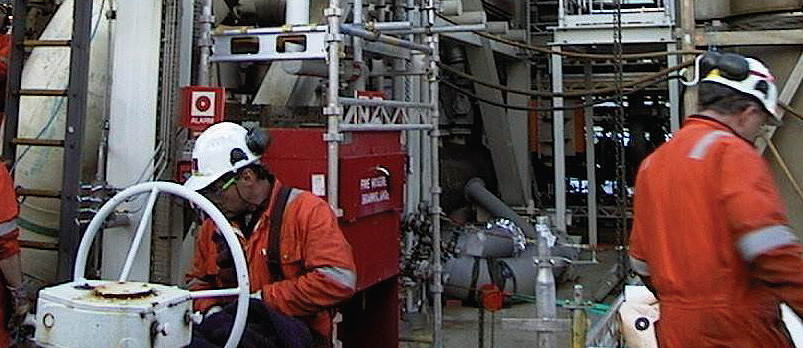
Aker Reinertsen’s Concurrent Engineering: Revolutionizing Maintenance and Modifications
The winning method
Since 2005 Aker Reinertsen, a leading maintenance and modification contractor in Trondheim, Norway, has pioneered the development and application of its concurrent engineering methodology, designed to provide considerable benefits to maintenance and modifications projects through a collaborative, integrated approach.
For the company, which currently serves StatoilHydro’s installations in the Norwegian Sea, this has given measurable results in terms of improved technical quality, more efficient project execution, and highly motivated employees and project teams.
 Aker Reinertsen was originally founded in 2001 as a joint venture by Aker Solutions and Reinertsen, and represents both organisations’ total commitment to the oil and gas market in Central Norway. Since this time the company, which prides itself on being a ‘local player with global resources’, has established itself as the country’s leading provider of maintenance and modification operations.
Aker Reinertsen was originally founded in 2001 as a joint venture by Aker Solutions and Reinertsen, and represents both organisations’ total commitment to the oil and gas market in Central Norway. Since this time the company, which prides itself on being a ‘local player with global resources’, has established itself as the country’s leading provider of maintenance and modification operations.
Knut Lian Kristiansen, head of health, safety, security and competence, elaborates on the foundation of the business: “Aker Reinertsen was specifically established to win the contract for the maintenance and modification of StatoilHydro’s installations in the Norwegian Sea, including the Heidrun, Norne, Asgard A&B, and Kristin platforms. This contract has a volume of around 900,000 man-hours, and covers all of the maintenance and modification work on the platforms for a five year period, with options for a further three two-year extensions.”
The scope of the contract, and of the various operations involved, was one of the chief reasons behind the development and introduction of the concurrent design methodology. Such an approach is ideal in operations of this kind, where a number of engineers from different disciplines have to work closely together in efficient, skilled project teams.
Kristin Halvorsen, head of interaction and communication at Aker Reinertsen, explains more about the development of the methodology: “The overall goal of introducing concurrent engineering has been to significantly improve the quality of our technical solutions, the efficiency of our operations, and the motivation and interaction of our staff. Essentially it is about introducing a set of procedures and work practices that integrate our engineers and workers with the client, the enduser and the suppliers, whilst ensuring close communication between the various disciplines that we have in-house.”
The concurrent engineering methodology is particularly useful in the initial start-up and design phases of a project. At this stage multidisciplinary project teams meet weekly to share information, present operating practices and procedures, and better understand the task ahead. Each meeting has defined goals and aims, a practice that enables decision-making, and allows all participants to fully understand the issues and interfaces of other disciplines within a project.
Looking at the implementation of the strategy, Tom Are Wold, project manager, explains that various challenges had to be overcome: “There were a number of problems that we encountered when introducing the concurrent engineering methodology – chiefly that we were essentially developing the system from scratch. Engineering and project development relies on each part of the chain  working, so it was initially difficult to ensure that it tied in with our established work practices and organisation structure. However, after some small adjustments in various areas, it has been surprisingly easy for each employee to adopt it.”
working, so it was initially difficult to ensure that it tied in with our established work practices and organisation structure. However, after some small adjustments in various areas, it has been surprisingly easy for each employee to adopt it.”
Discussing the benefits of the methodology, Kristin believes that those within Aker Reinertsen, and its clients have received it very well: “We are very pleased at how well it has been implemented, and at how it has made all of the projects more predictable and easy to manage. Furthermore, the understanding of the scope of the work has increased among every member of the project teams, meaning that the collaboration between disciplines and the exchange of information and knowledge is far simpler now.
“We are now working at adding more project teams to the operation, which means that we will continue to develop the methodology and its goals,” she continues. “In turn, we are working to ensure that every member of our staff fully understands the background and philosophy behind concurrent engineering, so that they can apply it to achieve the best possible results.”
Another key advantage of the methodology is that it allows engineers to exchange skills and experience easily. This has been particularly true for the company’s younger recruits, who have benefited from such close collaboration with engineers and experts in a number of associated fields. Tom explains: “Because the focus is very much on collaborating and sharing information and ideas we have found that all of our engineers are considerably expanding their knowledge base, with the learning curve continuing daily.”
Concluding, Tom is excited about the possibilities that the new method of working will bring to Aker Reinertsen: “We are unsure of what will happen at the end of the StatoilHydro contract, but at present I can see that concurrent engineering will certainly bring further success. If we continue to adapt and develop our organisation to truly fit the method then I am positive we can achieve our goal of continuously improving, and maintaining our position as the best maintenance and modification contractor in the Norwegian sector.”
Aker Reinertsen
Services: Maintenance and modification contractor